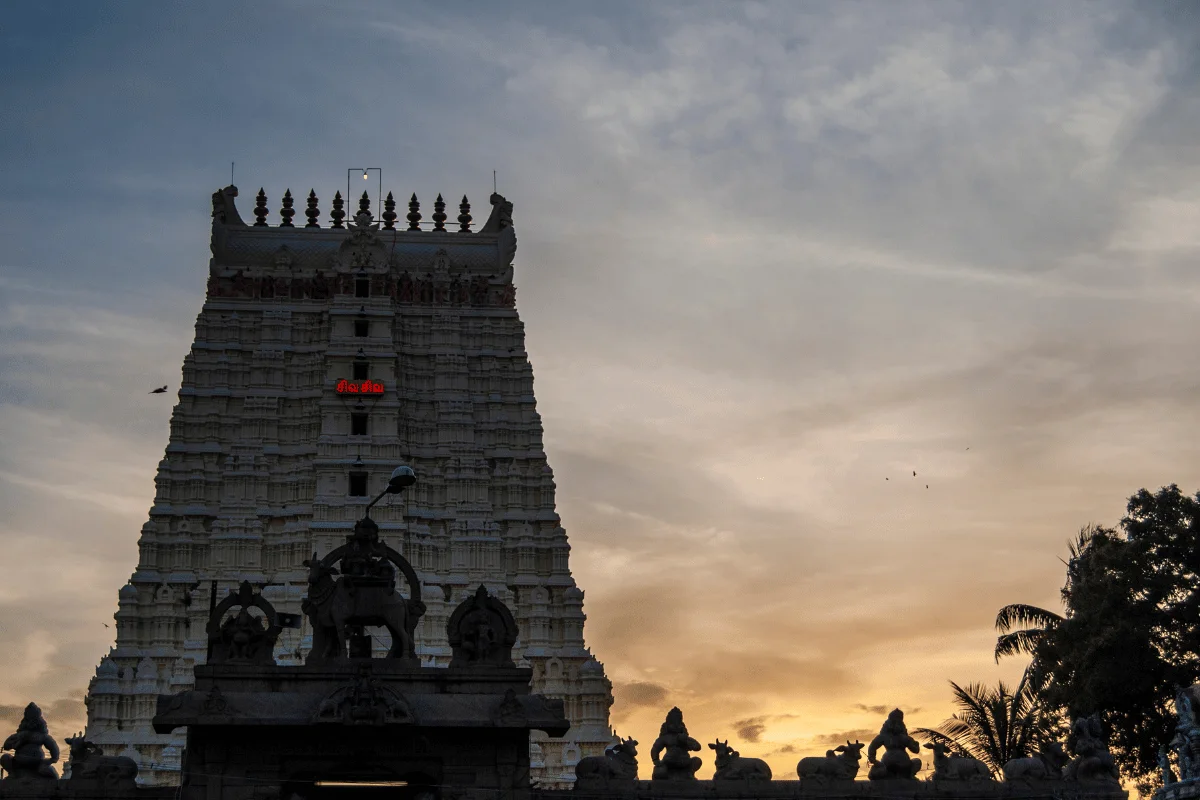Our Latest Blog

Ramanathaswamy Jyotirlinga – Tamil Nadu
Ramanathaswamy Jyotirlinga
Located on the serene and peaceful island of Rameswaram in the beautiful state of Tamil Nadu, the Ramanathaswamy Temple is as sacred as one of the holiest pilgrimage sites for Hindus. It is also one of the sacred Dwadash (12) Jyotirlingas, which further adds to its sacred place in the hearts of devotees. This magnificent temple is not only a powerful symbol of the devotion of the devotees, but is also a wonderful example of the architectural excellence of Dravidian architecture. It is located at the southernmost point of the vast Indian subcontinent, which adds to its mystical allure. This temple is said to be the same place where Lord Rama worshipped Lord Shiva in an attempt to seek forgiveness for the heinous sin of killing the demon king Ravana. Thus, this temple is very important on many levels, including mythological, spiritual and architectural, and is a place of immense religious and historical importance.
Location in Detail:
- State: Tamil Nadu
- Town: Rameswaram (Pamban Island)
- District: Ramanathapuram
- Nearest Railway Station: Rameswaram Railway Station (Approx. 2 km)
- Nearest Airport: Madurai Airport (~170 km)
- Coordinates: 9.2886° N, 79.3174° E
History and Mythological Significance
The history of the Ramanathaswamy Temple is deeply rooted in the rich and complex legend of the Ramayana, one of India's great epics in mythology. It is believed that after defeating the demon king Ravana in his victorious battle, Lord Rama was looking for a way to purify himself from the grave sin of Brahmahatya, or the killing of a Brahmin. To achieve this spiritual purification, he asked his loyal servant, Lord Hanuman, to go to the great Himalayas and bring back a sacred Shivalinga. But as time went by, Hanuman kept delaying for a long time in bringing back the Linga. Meanwhile, Lord Rama's loyal wife Sita herself made a Shivalinga out of sand, which Lord Rama later consecrated with great reverence. This Linga made by Sita is now worshipped as the Ramalinga, while the Linga brought back by Hanuman is worshipped as the Vishwalinga, and is also worshipped and installed in the temple complex.
Importance in Jyotirlinga Yatra:
Ramanathaswamy is the only Jyotirlinga located in the south and hence is a very important component of the Char Dham Yatra. It is one of the rare temples where both Lord Vishnu and Lord Shiva are equally worshipped and revered, and this is a special aspect of spirituality and faith.
Architectural Splendor:
- Style: Dravidian temple style
- Corridors: Temple corridors all over the world stretch to a mesmerizing length of about 1200 meters.
- Pillars: Over 1200 delicately carved granite pillars
- Gopuram: The colossal eastern and western gopurams (entrance gates)
- Holy Ponds (Teerthams): 22 wells of holy water in the temple grounds, each with its own legend and healing faith.
- During the 12th century, during the strong and influential rule of the Pandya dynasty, the temple was extensively expanded, making it much larger and more magnificent. This significant expansion was further enriched by donations from other rulers over time, each ruler adding his own unique influence to the temple's structure and design.
Special Features:
- It is generally accepted by scholars and devotees that bathing in all the 22 holy places located in the temple premises is beneficial, as it purifies the soul.
- Devotees perform Pinda Daan and religious rituals for their ancestors here, as Rameshwaram is as good as Gaya.
- The Ramalingam sand lingam created by Sita exists and is worshipped.
Rituals and Puja Practices:
- Abhishekam (holy bath): Water from 22 wells is performed on the Ramalingam.
- Daily Puja: Includes Spatik Lingam Puja, Palliaraya Deep Aradhana, Udayasthaman Puja and special monthly and annual Pujas.
- Special Occasions: Maha Shivaratri, Rama Navami and Thai Amavasya festivals are celebrated with great pomp and enthusiasm by people all over the world.
Weather Note:
- Best Time to Visit: October to April (pleasant and less humid)
- Avoid: May to September due to high humidity and monsoon rains
Surroundings & Nearby Attractions:
- Dhanushkodi: Ghost town with spiritual connotations
- APJ Abdul Kalam Memorial: Dedicated to India’s Missile Man
- Pamban Bridge: A marvelous railway sea bridge
- Agnitheertham: Sacred sea for ritual bath
- Kothandaramaswamy Temple: Connected to the exile period of Lord Rama
Other points:
- Connection with Chardham: This is one of the four most sacred pilgrimage sites that is sacred to both followers and seekers.
- Spiritual purification: It is commonly believed that visiting the temple washes away all sins and evil.
- Historical value: This invaluable virtue has been mentioned in ancient texts, such as the Skanda Purana.
- Special tradition: Pilgrims have to bathe in the Agnitirtham ocean and then in 22 wells before entering the sanctum sanctorum.
Beliefs of devotees:
- The Ramalinga is said to offer moksha (liberation).
- Bathing in the 22 holy pilgrimage sites provides immense healing for those suffering from chronic diseases, as well as a way to cleanse themselves of past misdeeds and bad deeds.
- It is believed that worshipping ancestors here is a major factor in granting them liberation and spiritual freedom.
Travel Tips & Advice:
- Dress Code: Traditional attire preferred
- Photography: Restricted inside temple premises
- Timings: 5:00 AM to 1:00 PM & 3:00 PM to 9:00 PM
- Footwear: Not allowed inside temple complex
- Local Cuisine: Try South Indian Thali, Filter Coffee, Banana Chips